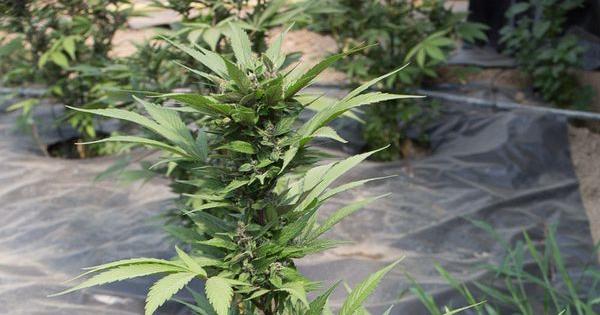- If you're thinking about starting to grow cannabis, you may find yourself immersed in a sea of doubt. What culture system shall I use? What kind of seed is best?
- The possibilities are endless and the best option will always be the one optimally suiting the conditions of your crop.
- The climate, the space you have available and the goal you want to achieve must be taken into consideration.
- Here, we'll try to solve some of your doubts by explaining the differences between feminised cannabis seeds and autoflowering marijuana seeds.

If you want to grow outdoors...
Feminised outdoor
- They have a rigid schedule: feminised are governed by the photoperiod, so there is a maximum time for planting (usually in the Northern Hemisphere it varies between March and June) as well as for harvesting (usually in September-October).
- The size of this type of cannabis plants is more mouldable: as you have a growing season linked to sun exposure, while the days are long, the plant will grow; therefore, if there are no other factors determining their growth (pot size, pests) the longer the time you invest in the growing season, the larger the size your plant will reach.
- You can shape your plant through pruning: since the growing season can take several months, you can correct the shape of your plant and mould it to your pleasure.
- More production: Usually, a feminised marijuana seed will provide a greater production of flowers than an autoflowering one.
- More quality: although the quality of the autoflowering has greatly improved in recent years, the buds of a feminised plant will achieve higher levels of flavour and density than those of an autoflowering one.
Autoflowering outdoor
- Flexible schedule: since autoflowering marijuana plants do not depend on the photoperiod for flowering, you can have several harvests in one location and season throughout March to October.
- Misleading thieves: outdoor harvest time takes place in the months of September-October, that is, when thieves concentrate their efforts to steal the plants loaded with buds. As the calendar of autoflowering plants is flexible, it will allow you to harvest in those months when thefts are less frequent, like June, July or August.
- Programmable Harvest: autoflowering cycles are fixed, i.e., since they don't depend on light cycles to perform their vital development, you can calculate when your harvest will be ready. Normally, we are talking about periods ranging from 60 to 70 days, depending on the strain. Thus, autoflowering cannabis seeds allow you to schedule your marijuana harvest and therefore to know in advance when you will have your pantry full of succulent buds.
- Light pollution: another advantage offered by these seeds is that you don't have to worry about light pollution; i.e., it doesn't matter if there is a lamp lit at night and the light falls directly on your plant. This, in a feminised marijuana plant, could be a problem, because in order to go through the flowering period properly, they need 12 hours of complete darkness.
- Speed: the cycles of autoflowering marijuana plants are clearly shorter than those of feminised, as mentioned earlier. In about 60-70 days your plant will be ready to harvest. This means that there is less risk to suffer pests because the plant life cycle is shorter.
- Discretion: autoflowering marijuana plants are ideal for those growers who seek discretion. Depending on the size of the pot, we can determine the future size of the plant (the larger the pot, the larger the plant will be); so this is a perfect choice for those who want to cultivate in a balcony, for example.
- Taste: as a general rule, autoflowering plants produce more leaf material in the buds that the feminised ones. Consequently, the taste of autoflowering is a bit worse.
- Pruning: It is not recommended to apply any pruning technique to autoflowering plants, because there is no time for the plant to recover and pruning loses all meaning.
- Early mistakes: even though autoflowering plants are usually a good choice for beginners, they have a small drawback: an error will pay dearly. Since the cycle of these plants is very short, there is no time for them to recover. Therefore, if you make a beginner's mistake and your plant is blocked, it will most likely be reflected in your harvest.
If you want to grow indoors...
Feminised indoor
- Variable and programmable cycles: feminised marijuana plants depend on the photoperiod to flower. In the vegetative phase (the plant only grows and does not produce flowers) cannabis plants should ideally receive 18 hours of light. If you manage to keep your culture under 18 hours of light and 6 of darkness, plants will grow steadily. By the time you change the timer controlling the lamps of your crop to 12 hours of light and 12 hours of darkness, they will immediately start the flowering period. This is a great advantage when applying techniques like SCROG, because we can extend the vegetative phase as much as we want.
- Possibility of developing mother-plants: since you can lengthen the vegetative season of feminised as much as you want, this will allow you to select those plants whose characteristics (speed, power, endurance, aroma…) are the best and produce mother-plant later to obtain crops from cuttings.
Autoflowering indoors
- Speed: an advantage of autoflowering versus feminised is that their life cycle is shorter, so you will have access to your harvest in a shorter period of time.
- Default duration: as autoflowering plants don't depend on the photoperiod for their cycle, once it starts you will know just about how long your crop will take.
- Pests: since these plants have a shorter life span, the risk of a plague infecting them or expanding so much that it becomes fatal is less.
- Economy: we recommend cultivating cannabis plants in a single autoflowering photoperiod of 18 hours of light and 6 of darkness for maximum performance. This, even though it results in increased productivity, will also imply an increased spending on the electricity bill.
- Pruning: we don't recommend pruning autoflowering plants in indoor cultivation because it makes no sense given the rapidity of its cycle.




Comments from our readers
Read comments in other languages:
Did you like this post?
Your opinion about our seeds is very important to us and can help other users a lot (your email address won't be made public).